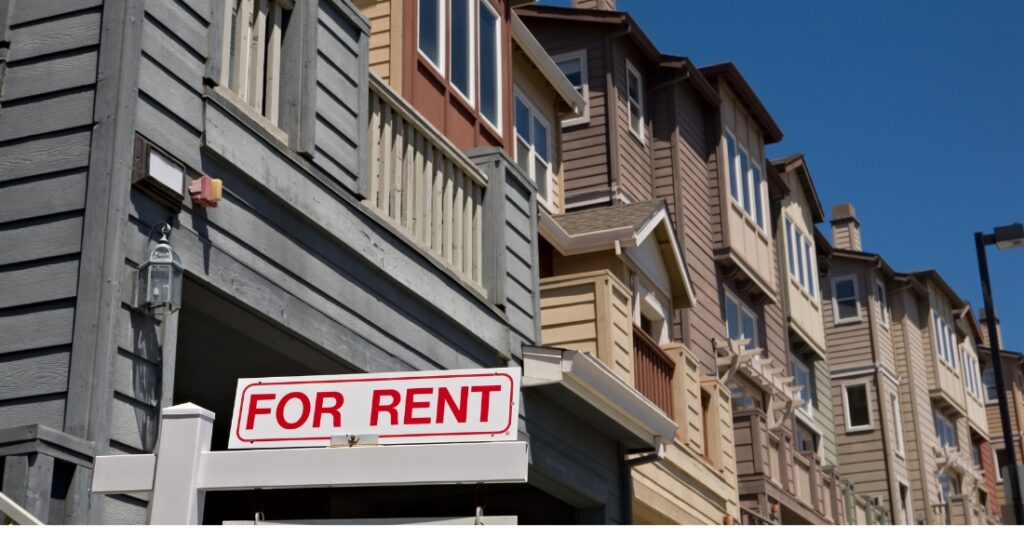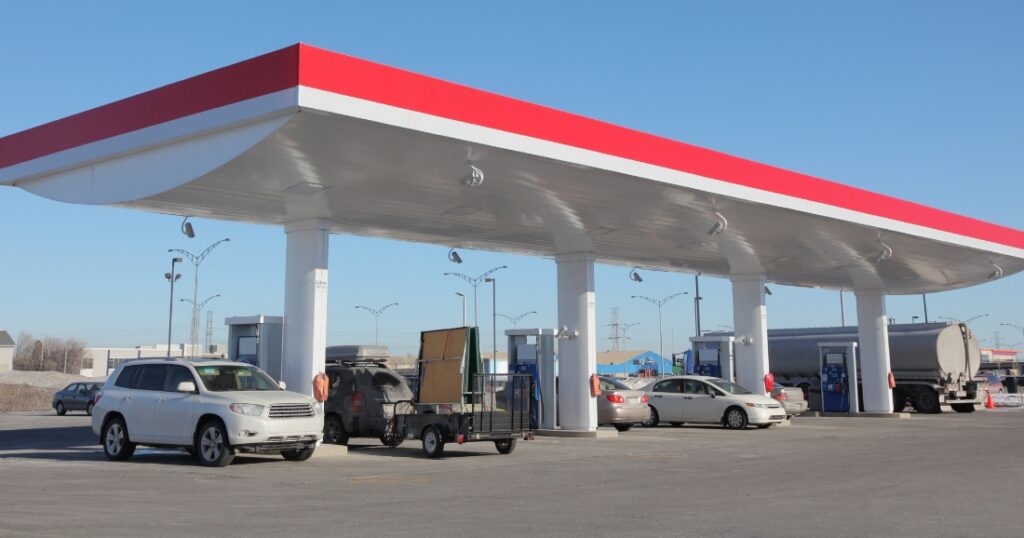Is it cheaper to live in Canada or the United States? Both North American countries are primarily English-speaking, offer no shortage of natural beauty, and have similar cultures. However, there are some key differences between our neighbouring countries.
Below, we’ll discuss the age-old debate – what is the cost of living in Canada compared to the United States?
In this cost of living in Canada vs the US comparison, we’ll compare the two countries side-by-side based on the following criteria:
- Average Salary
- Cost Of Living In A Major City
- Cost Of Living In A Suburban Area
- Cost Of Utilities
- Cost Of Fuel And Transportation
- Cost Of Eating Out
- Cost Of Groceries
- Cost Of A Monthly Gym Membership
- Healthcare
Whether you’re moving to either of the two countries or just curious to see how the two countries compare side-by-side, you’ll find everything you need below!
Cost Of Living In The US vs. Canada: Cost Parameters
To give you a quick overview of how the cost of living in Canada compares to the US, here’s a chart outlining the cost of key living factors (data sourced at Numbeo):
| Canada | US | |
| Median Household Salary After Tax | $66,800 | C$85,668 |
| Cost Of Living In A Major City (monthly rent) | Toronto: C$2,430.82 Vancouver: C$2,491.02 | New York City: C$5,382.82 Los Angeles: C$3,650.60 |
| Cost Of Living In A Smaller City (monthly rent) | London, ON: C$1,836.35 Montreal, QC: C$1,432.00 Halifax, NS: C$1,706.47 | Phoenix, AZ: C$2,404.15 Tampa, FL: C$2,911.95 Baltimore, MD: C$2,010.81 |
| Cost Of Utilities For Small Apartment | C$191.35 | C$252.92 |
| Cost Of Fuel And Transportation | Gallon of Gas: C$6.81 1-Way Bus Ticket: C$3.25 | Gallon of Gas: C$5.22 1-Way Bus Ticket: C$3.46 |
| Cost Of Eating Out (inexpensive restaurant) | C$20.00 | C$24.91 |
| Cost Of Groceries | Cheaper | More expensive |
| Cost Of Monthly Gym Membership | C$55.11 | C$57.95 |
| Healthcare | Free government healthcare | Most residents must pay for private healthcare |
Looking for more in-depth information? Keep on reading for a full breakdown comparing the cost of living in Canada and the US.
Cost Of Living In Canada vs. The US: Head-to-Head Comparison
Canada and the US share similar economic models and even have a similar education system.
While they have different currencies and slightly different work cultures, the living costs between the two countries are relatively similar compared to the drastic difference you’ll find in Central and South American countries.
That being said, there are some differences.
Rental rates vary, healthcare is different, and the cost of various consumer goods and fuel is different. Now, let’s take a look at just how different the two countries are when it comes to the cost of living.
Average Salary And Income

In Canada, the median after-tax household income is C$66,800, according to the latest report from Statistics Canada.
In the US, the median after-tax household income is US$64,240 as of 2022 (see Table B-2 in the source). Adjusting that number based on the current exchange rate, the current US median income in Canadian dollars is around C$85,668.
This means that the median income in the United States is significantly higher than Canada’s.
Interestingly, Canada has a much higher federal minimum wage than the United States. The federal minimum wage in the US is $7.25 per hour (C$10.09), whereas the federal minimum wage in Canada is C$15.55.
That being said, many states in the US have higher minimum wage laws, with many states offering more. For example, the minimum wage in the state of Washington is $15.74 per hour (C$21.81), which is far higher than any of the provincial minimum wages in Canada.
Currently, the Canadian region with the highest minimum wage is the Yukon territory (C$15.70). This is closely followed by British Columbia, with a minimum wage of C$15.65.
Despite Canada’s higher federal minimum wage, US workers still earn higher wages as a whole.
However, US workers don’t have as much job security as Canadians. Unions are stronger in Canada than in the US and work hard to protect workers’ rights and pay.
Cost Of Living In A Major City

If you enjoy the city lifestyle, both the US and Canada offer large, modern cities. Toronto and Vancouver are regarded as the largest and most expensive Canadian cities. Los Angeles and New York are the largest, most expensive cities in the US.
If you want to live downtown in any one of these major cities, it’s going to cost you. Here’s how the cost of renting an apartment in Canada and the US major cities compares, based on the latest data from Numbeo. For convenience, all numbers are in Canadian dollars.
Cost of renting in the city centre (major US cities):
- New York: C$5,382.82
- Los Angeles: C$3,650.60
Cost of renting in the city centre (major Canadian cities):
- Toronto: C$2,430.82
- Vancouver: C$2,491.02
The rent difference between Canada’s most expensive cities versus the US’ most expensive cities is astounding, to say the least.
So in terms of the cost of living in a major city, Canada is definitely the more affordable of the two countries.
Cost Of Rent In A Smaller City

Unless they earn a comparatively high income, the average Canadian isn’t living in the heart of Vancouver or Toronto. Housing prices and rent in mid-sized suburban cities are far more affordable. The same goes for the United States.
So, let’s compare the cost of rent in a suburban region surrounding major cities.
Cost of rent in smaller Canadian cities:
- London, Ontario: C$1,836.35
- Montreal, Quebec: C$1,432.00
- Halifax, Nova Scotia: C$1,706.47
Cost of rent in smaller US cities:
- Phoenix, Arizona: C$2,404.15
- Tampa, Florida: C$2,911.95
- Baltimore, Maryland: C$2,010.81
Even moving out towards a smaller city, Canadian cities still offer cheaper rent, on average, than comparable US cities.
Cost Of Utilities

In addition to the cost of rent, you also have to factor in the cost of utilities, such as:
- Electricity
- Water
- Internet
- Garbage services (where applicable)
In Canada, the average cost of basic utilities for a 915-square-foot apartment is C$191.35, and the average cost for internet is C$84.07.
In the US, utilities cost an average of C$252.92, and internet data costs an average of C$96.16.
Here again, Canada is the clear winner when it comes to lower-cost living. While it’s not quite as drastic of a difference as we saw in the rental comparison, US residents still pay over 25% more for utilities than their Canadian counterparts.
Cost Of Fuel And Transportation

Now let’s take a look at the cost of fuel and transportation, as these are important aspects of getting around, staying employed, and whatever else you may need to do outside of the house.
Per Numbeo’s stats, a gallon of gasoline in the US costs C$5.22 and C$6.81 in Canada. This means that fuel, on average, is cheaper in the US than in Canada. There are fewer fuel taxes, and there is a higher demand, given the US’ vast expanses of highways.
Now, let’s take a look at public transportation costs. Not everybody has access to a vehicle, and even those who do may prefer to save money by taking the bus or train.
In Canada, a one-way bus ticket will run you around C$3.25. That same ticket would run you about C$3.46 in the US.
Taxi rides in Canada cost an average of C$3.22 per mile. In the US, they cost C$3.74 per mile.
Public transportation in Canada is slightly cheaper than in the US. That being said, the US has cheaper fuel prices, so I’d say this category is a close tie.
Cost Of Eating Out At A Restaurant

Cooking at home is a great way to save money, but sometimes we need to take a break and let someone else cook by visiting one of our favourite restaurants.
Obviously, this category can vary heavily depending on the calibre of the restaurant you’re visiting. A high-end restaurant in downtown Toronto will be comparable to the cost of eating at a high-end restaurant in NYC.
What if you’re just eating at an inexpensive local restaurant, though?
In Canada, a meal at an inexpensive restaurant will cost you an average of C$20.00. In the US, you’d pay C$24.91. The average fast food combo meal costs C$12.00 in Canada and C$13.79 in the US.
While the prices are similar, Canada has overall cheaper restaurant prices than the US.
Cost Of Groceries

Both Canada and the US are agricultural centres and are home to vast swaths of farmland. That doesn’t mean that the price of groceries is the same, though.
In Canada, a loaf of bread costs an average of C$2.87. In the US, a loaf will run you C$4.10. Based on this chart from Numbeo, the cost of veggies is also higher, with most fruits and vegetables costing 15 to 30 cents more per pound in the US than in Canada.
Not only is it cheaper to eat out in Canada, but it’s also cheaper to purchase groceries in Canada.
Monthly Gym Membership Costs

Gym culture is big in most US and Canadian cities. But how much does the average gym membership cost?
As it turns out, the US and Canada offer very similar rates for fitness clubs and gyms. In the US, the average gym membership costs C$57.95 per month. In Canada, you’d save a couple of dollars, as the average fitness club membership costs C$55.11 per month.
Remember that fitness club memberships vary greatly, depending on where you go. There will always be a market for high-end, elite gyms, just as there will always be a market for larger, more affordable gyms.
I’ve seen gyms in both the US and Canada that offer monthly memberships for as low as $25 per month.
Healthcare

Healthcare is easily one of the biggest differences between Canada and the US.
Take maternity leave, for example. In Canada, maternity leave is standard for both mothers and fathers. Some companies may even require employees to take mandated leave. This is not the case in the US, and many families take a major financial hit when they add a new family member.
Free government healthcare is just one of the many benefits Canadians can take advantage of. While the US provides free or low-cost healthcare options for low-income earners, most US residents must pay for their own private health insurance.
Without a doubt, healthcare is more affordable in Canada than in the US.
Key Insights
- Luxury Activities Cost Slightly More In Canada
- Consumer Prices Are Generally Lower In Canada
- Healthcare Costs Are Lower In Canada
- Tax Rates Are Higher In Canada
- Fuel Is More Expensive In Canada
The Verdict – Is It Cheaper To Live In Canada Or The US?
Both Canada and US share similarities and differences. Although the median income in the US is higher than the median income in Canada, the cost of rent is cheaper in Canada than in the US.
Additionally, the cost of groceries, eating out, and public transportation are also cheaper in Canada than in the US. Income plays a big role, though, which is likely why many of these goods and services cost more in the US.
Ready to come and visit Canada? Keep reading to see my list of the cheapest places to live in Canada!





Do you know there is a difference between After-tax income and before-tax income? You use Canada’s after-tax income to compare with US’s before-tax income, then conclude that US income is significantly higher than Canada. Then when I scroll down, I find you have a title of CFA, what a shame to CFA!
Hey Jeff, it is after-tax income, see the line that says: In the US, the median after-tax household income is US$64,240 as of 2022 (see Table B-2 in the source). Adjusting that number based on the current exchange rate, the current US median income in Canadian dollars is around C$85,668.
While Canada is expensive, it’s not as expensive as the US. I’ve lived in both countries, and while the exact place you’re living in does matter, the US is much more expensive overall.